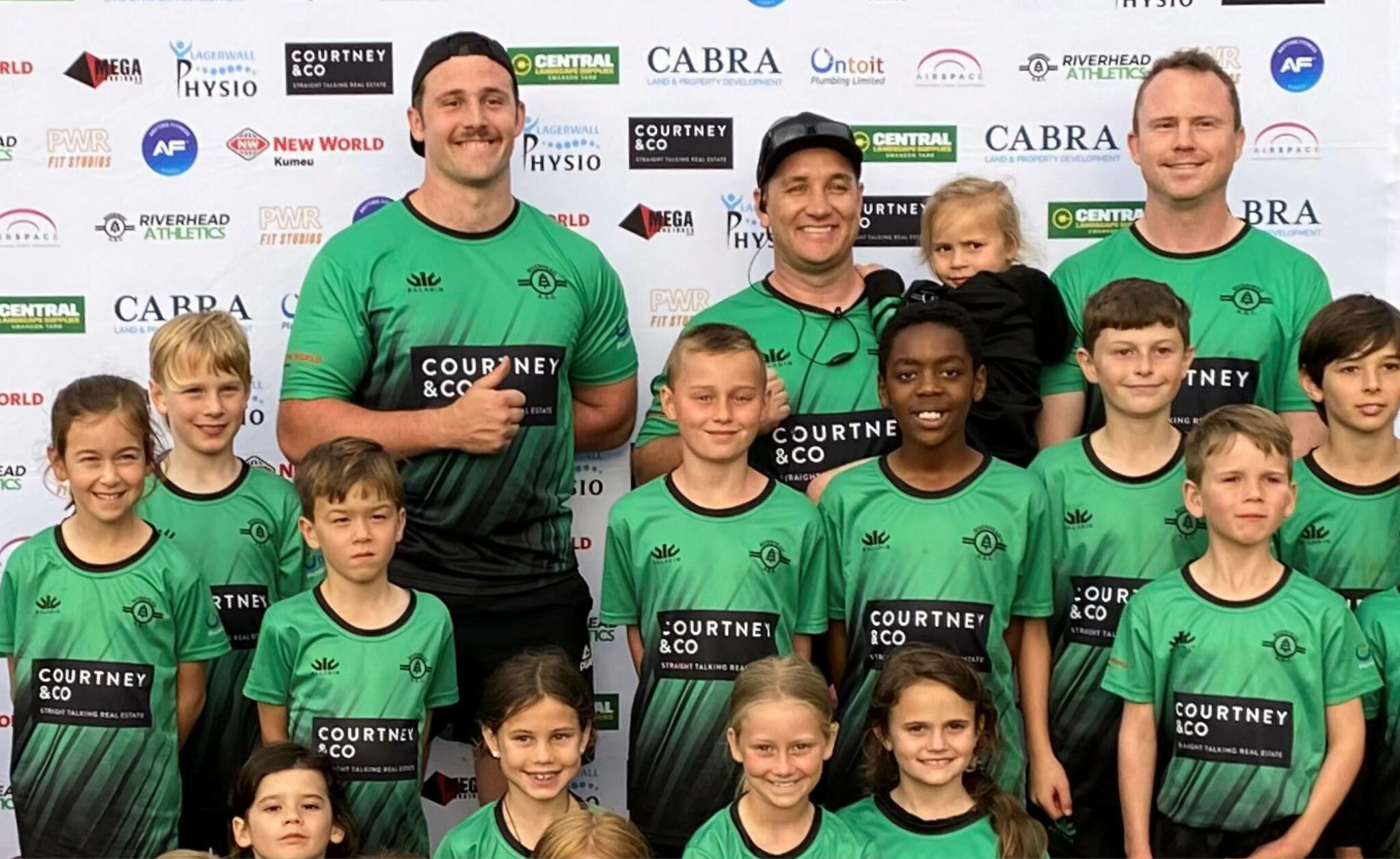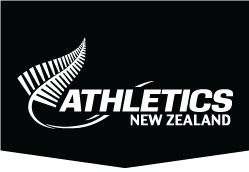News & Updates
Five ways to develop a good club culture

Riverhead Athletics have shown great innovation around sponsorship which has allowed their club to excel.
The biggest challenge facing athletics clubs is the retention of members and volunteers. Here are five steps to establishing a vibrant and attractive club culture which will best allow your club to thrive.
1 – Form a strong identity
The identity of a club is crucial. Central to that is the athletics club singlet, the colours/club badge and logo. Values are based around the behaviours of the club; how does it look, feel, what do you see, hear. Is there a sense of belonging, community. How are we embracing this as a sport and building an environment. Olympic Harriers in Wellington are one such club who have forged a clear identity through clear lines of communication and innovation.
“The club has separated the junior and senior club committees,” explains Amanda Goldsmith head club coach of the Olympic junior and youth track and field division.
“This allows the harrier side of the club to focus on the seniors and masters while we are free to focus on the growth of junior and youth athletes and to provide an experience which is both fun, supportive and progressive so that they can develop to the best of their ability.”
“We stress the importance of loyalty and commitment to both the athletes and parents, this attitude then gives the kids a purpose – they have goals and dreams and we do our best to support them.”
2 – Make it more than sport
So much of any athletics club is based around the sport – the running, jumping and throwing. While this focus makes total sense it is critical to create an environment to draw the participants and parents in. This means the sausage sizzle, goody bag and connecting with other families is just as healthy. Going for a coffee or beer after the event can further generate a sense of community and contribute to the overall health of the club. Feilding Moa Harriers are one club who have valued the importance of forging connections outside of the running and they have consequently not only retained membership but enhanced the number of club members.
“Our overarching principle is that if it is not fun, we are not doing it right,” says Rob Dabb of Feilding Moa Harriers. “This flows from our committee to all of our club events. People go to where they get a sense of enjoyment and fulfilment.”
Feilding Moa have put a big emphasis post their club events on enjoying a shared afternoon tea together. “For us fun equals food but it’s not so much on the consumption but that it allows for a common gathering point where people get to know each other.”
The club – which has members aged 80 to the age of two – operate an inclusive approach so they run a weekly club activity for everyone even if that clashes with a major meeting that week such as the Jennian Homes New Zealand Track & Field Championships. While to further develop a sense of inclusion regular competition under the handicap format is also provided.
“We feel it challenges the elites to go a bit quicker while giving incentive for everyone else to have equal opportunity of a win.”
3 – Make it fun
How do we play athletics? It’s often perceived as an arduous solo sport which requires a lot of blood, sweat and tears. How do we break down those barriers? The focus then needs to be on modified versions of the sport focused on fun, skill development, teams and a sense of belonging wrapped up in a caring environment. One recent example is Launch Athletics – which provided a colourful, fun version of the sport. Get Set Go and Run Jump Throw are two other programmes which fit this approach.
Dunedin-based Ariki Athletics and Harrier club have fully embraced the fun side of the sport leading to strong membership retention.
Club president Sian Ellis believes focusing on the competitive side was a turn off for some youngsters, so in recent years Ariki has put a strong emphasis on Get Set Go and Run Jump Throw programmes to retain interest and engagement.
“Ariki wanted to position itself with a big focus on family and inclusivity and not just about competing on a Saturday,” she says. “We do have great coaches at the club and a focus on the competitive aspect, but we have found the majority of our athletes are non-competitive. Out of 70 or 80 kids maybe 25 or 30 might be competitive, the rest are here just to participate and learn some skills. Using Get Set Go and Run Jump Throw works because they are being taught skills without it feeling like a rigid learning experience.”
4 – Build relationships
Bringing in a local sponsor and the club building relationships with local funders/sponsors can benefit not only the financial health of the club but also forge meaningful associations with the local community.
The Riverhead Amateur Athletics Club is fortunate enough to have both cash and product sponsorship deals as well as grant opportunities to the value of $35,000 across the next two-year period thanks to a proactive approach to reaching out to their local business community.
Club President Tyron Lagerwall said: “The main goal for us as a club is for more kids to be active in athletics and to keep the cost low. We use the sponsorship funding to supply uniforms for every athlete at no cost to the parent as well as funding sports specific coaches who have recently joined the club. We are looking to fund new technology to improve the overall experience for our athletes on club nights by purchasing communications equipment to ensure smooth running of events, as well as obtaining equipment to allow us to use a photo finish app to record running races.”
The club offers three tiers of sponsorship on their athletics shirt. Principal Sponsor “Courtney & Co” appears on the front of the shirt along with ten station flags with their logo situated across the field on club nights, Gold Sponsorship option for the sleeves of the shirt and Silver Sponsorship with logos to appear like a chocolate block on the back of the shirt.
Acknowledging that many businesses are facing big challenges today, Tyron is keen to emphasise how the club is keen to give good return to all its sponsors.
“We ask our membership to use our sponsors who come from various industries, so they get a return on their investment. We have asked our sponsors to monitor how many people connected with them from the athletics club via “sales codes”. An example is our physio sponsor who provides discounted treatment for our athletes as a product sponsor. By keeping the details of how many athletes use their business might lead to discussions of becoming a cash sponsor in future.”
Tyron also suggests that the club carry out research on what trusts and charities are open to grant applications in your local area in order to attract more funding into the club.
5 – Work with the attenders to engage
There are essentially three levels of participants – attenders, intenders and the indifferent. It is vital the club works closely with attenders to work as advocates and to try to engage those intending. The indifferent will be the hardest to reach which may require innovative and active interventions and drivers. Owairaka AC are an excellent example of a club who adopt a forward-thinking approach to recruitment by using club members to encourage intenders to join the club through a number of different methods.
Junior club coach Julie Collard is the founder of the Owairaka Park Run and Owairaka AC members are a regular presence at the weekly 5km run. Sometimes adopting pacing duties for runners their visibility has played an impactful role in helping membership recruitment.
“It just seemed a logical step,” explains club coach Nick Moore. “There are 14,000 runners out there competing at the Auckland Marathon and we maybe have 60 senior members so we can see the massive potential in the running market for more members. By being present at the Owairaka Park Run we make being part of an athletics club more relatable. It is a slow burn, but we’ve attracted membership through the Park Run.”
***Athletics NZ has facilitated a number of workshops in Centres such as Auckland, Hawke’s Bay, Tasman, Otago and Canterbury in the recent past If you require any further insights (strategic thinking) and culture (behavioural thinking) please contact Club Development Lead Stu Savage – stuart@athletics.org.nz
LATEST NEWS
- Kerr all set to soar at the innovative What Gravity Challenge
- Weekly Round Up: 7 May
- Nagel at the double and Speakman breaks national hoodoo
- Voss reigns in 60th anniversary Red Stag Rotorua Marathon
- Nagel secures national road mile title with record-breaking display
- Twelve named in initial NZ World Athletics U20 Championships team
- Red Stag Rotorua Marathon set to toast special anniversary
